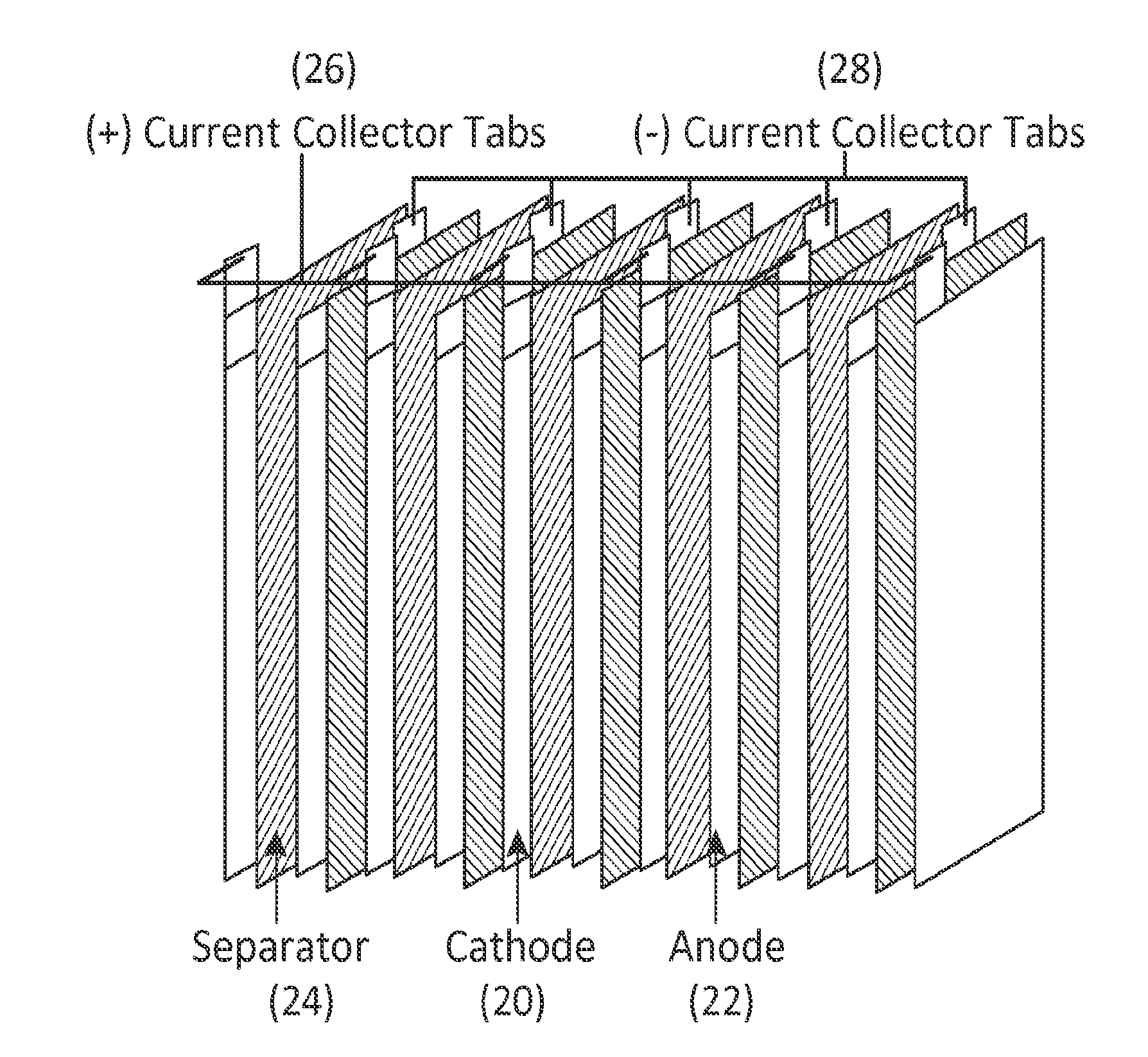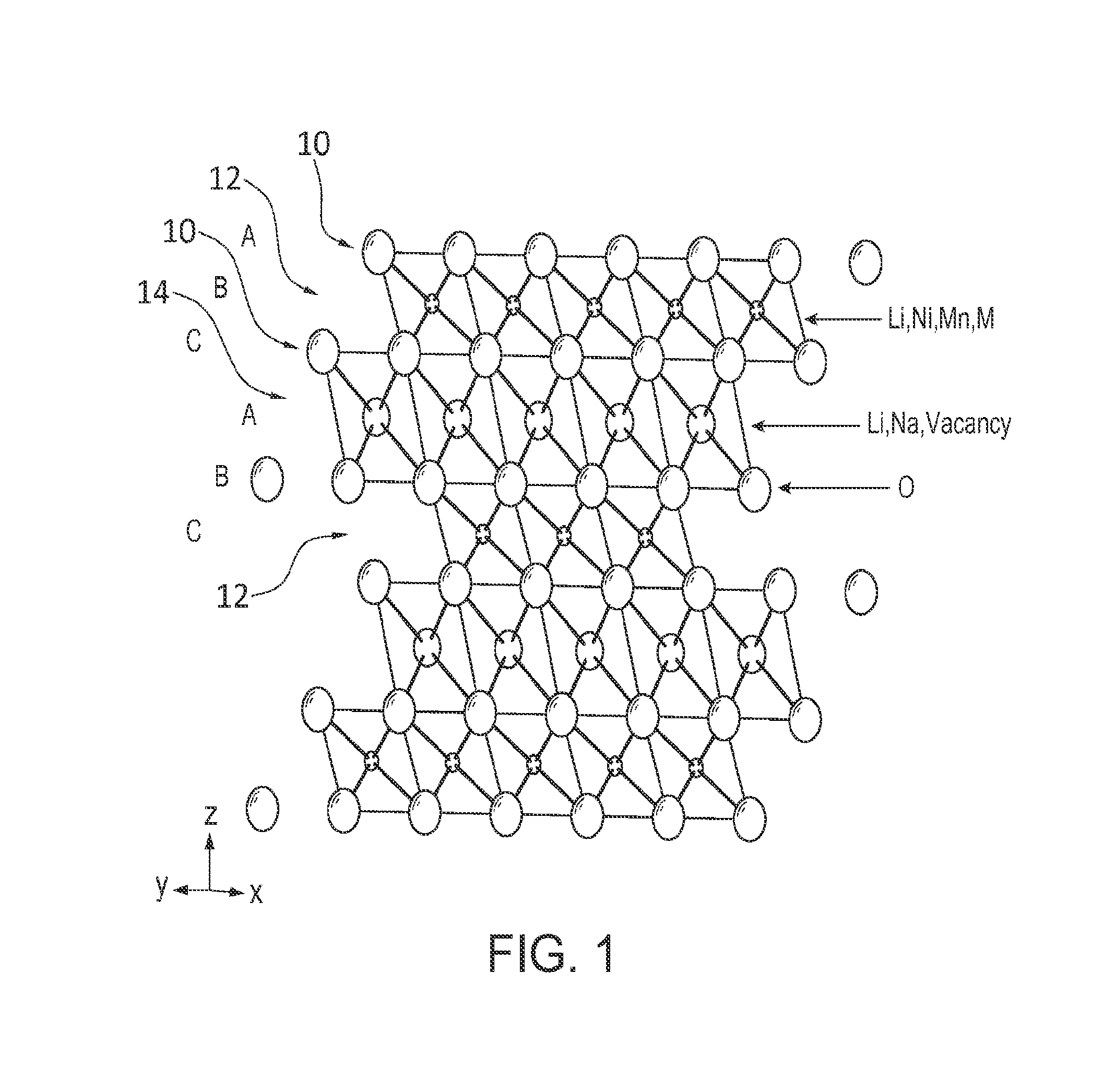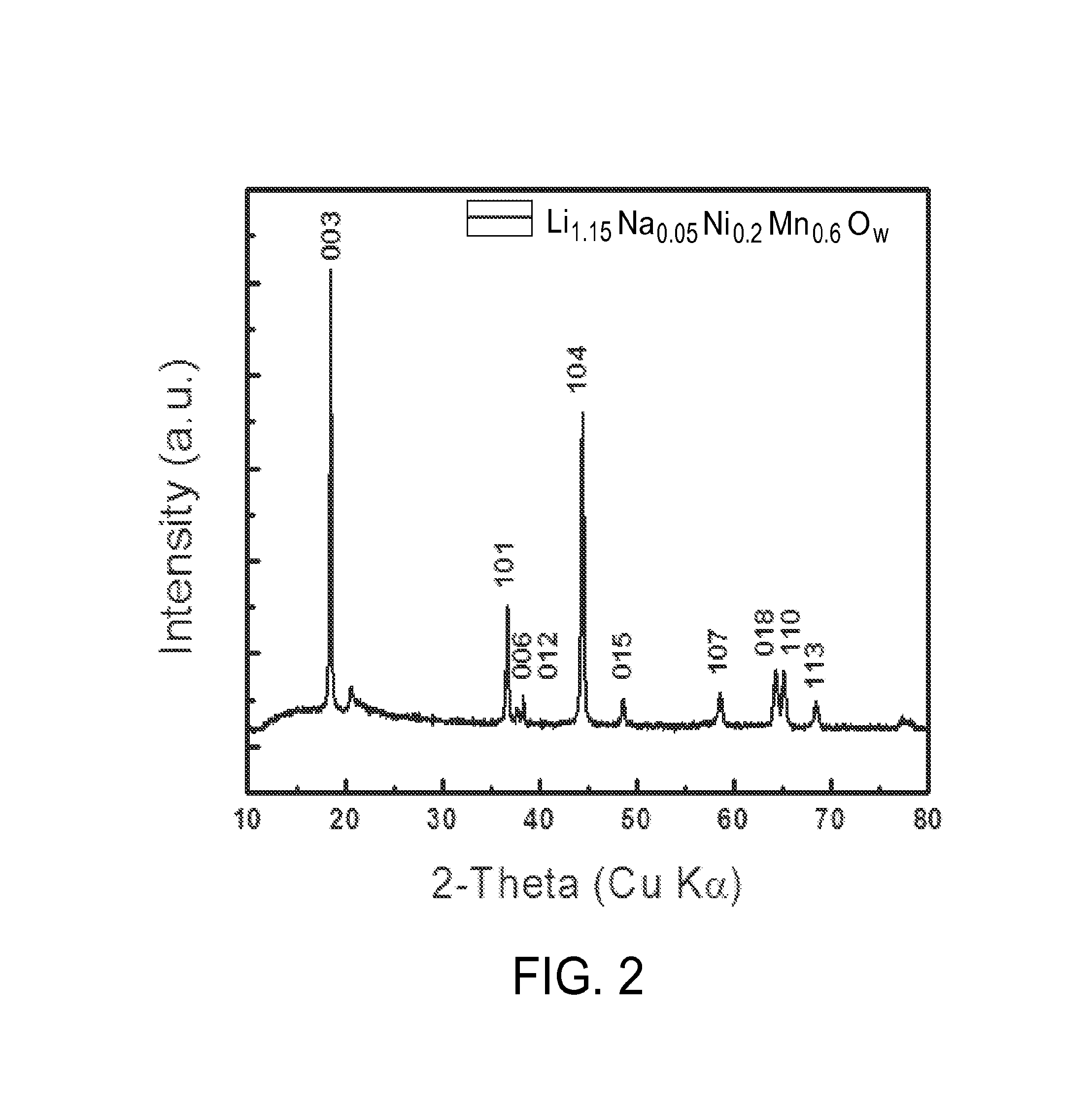Lithium and sodium containing layered oxide material, cathodes and sodium ion electrochemical cells
- Summary
- Abstract
- Description
- Claims
- Application Information
AI Technical Summary
Benefits of technology
Problems solved by technology
Method used
Image
Examples
example 1
[0075]An active layered phase Li1.15Na0.05Ni0.2Mn0.6O2, cathode material was prepared by heating a mixture of about 0.79821 g LiOH.H2O, 0.05306 g Na2CO3 and about 1.2 g Ni0.25Mn0.75(OH)2. The hydroxides and carbonates were thoroughly mixed for about 6 hours in a ball milling and then ground with a mortar and pestle for about 30 minutes prior to heating. The resulting powder was placed in to a box furnace, and then heated to a decomposition temperature, e.g. about 480-500° C., over about 2 hours and held there for a sufficient time to achieve decomposition, e.g., about 5-12 hours. In the experiments, 12 hours was a typical time. This heating achieves decomposition of Ni0.25Mn0.75(OH)2 to form Ni0.25Mn0.75Oe. The sample was allowed to cool to room temperature in the furnace. The pre-calcination product was then reground and placed in to a box furnace to react with LiOH, and then heated to a reaction temperature, e.g., about 800-1100° C., over about 3 hours and held there for a reactio...
example 2
[0077]The material synthesized in Example 1 is a powder and was processed into cathode laminates. Each cathode were prepared by mixing cathode material with a conductive additive of 10 wt % Carbon Black and 10 wt % PVDF binder (inactive component) then added N-methyl pyrrolidone solvent. The slurry was cast onto an Al foil using a doctor blade and dried in a vacuum oven at 80° C. for 12 hours. The cathode disks were punched and dried again at 80° C. before storing them in an argon-filled glove box (H2O level of 6 in a 1:1 ethylene carbonate: dimethyl carbonate solution were used as the counter electrode and electrolyte, respectively. A Celgard model C480 separator was used as the separator. The coin cells were assembled in an argon-filled glove box and tested on an Arbin battery cycler in galvanostatic mode. The tests were conducted between 2.0 and 4.8 V at a constant current rate of 12.5 mA / g. The Li / Li1.15Na0.05Ni0.2Mn0.6O2 cell voltage profiles for the first cycle between 2.0 to ...
example 3
[0079]Following the reaction protocol in Example 1, the O3 type cathode material Li1.133Ni0.3Mn0.567O2 can be prepared using the appropriate mole stoichiometries of LiOH.H2O and Ni0.25Mn0.75(OH)2. Then, the Na0.8Li0.14Ni0.3Mn0.567Ow was prepared by ion-exchange. The Li1.133Ni0.3Mn0.567Ow cathode which contains more lithium (y>0.6) was charged with cut off voltage at 4.8 V (vs. Li metal, using 1M LiPF6, 1:1 EC:DMC) and discharged with cut off voltage 1.5 V (vs.Na metal, using 1M NaPF6, 1:1 EC:DEC), thus O3 type Na0.08Li0.14Ni0.3Mn0.567Ow cathode which contains more sodium (x>0.6) cathode was obtained. XRD spectra for the Na0.08Li0.14Ni0.3Mn0.567Ow is depicted in FIG. 4.
[0080]Specifically, the reaction process in example 3, began with the Li1.133Ni0.3Mn0.567O2 containing more lithium (y>0.6), which was made into a cathode and assembled with Li anode. The prepared cell was charged with various cut off voltage at 4.8 V (vs. Li metal, using 1M LiPF6, 1:1 EC:DMC non-aqueous electrolyte) t...
PUM
 Login to View More
Login to View More Abstract
Description
Claims
Application Information
 Login to View More
Login to View More - R&D
- Intellectual Property
- Life Sciences
- Materials
- Tech Scout
- Unparalleled Data Quality
- Higher Quality Content
- 60% Fewer Hallucinations
Browse by: Latest US Patents, China's latest patents, Technical Efficacy Thesaurus, Application Domain, Technology Topic, Popular Technical Reports.
© 2025 PatSnap. All rights reserved.Legal|Privacy policy|Modern Slavery Act Transparency Statement|Sitemap|About US| Contact US: help@patsnap.com



